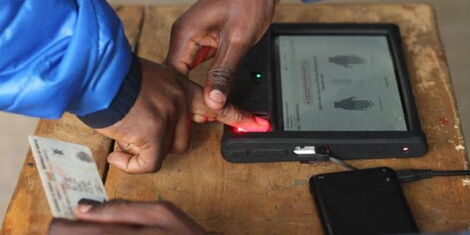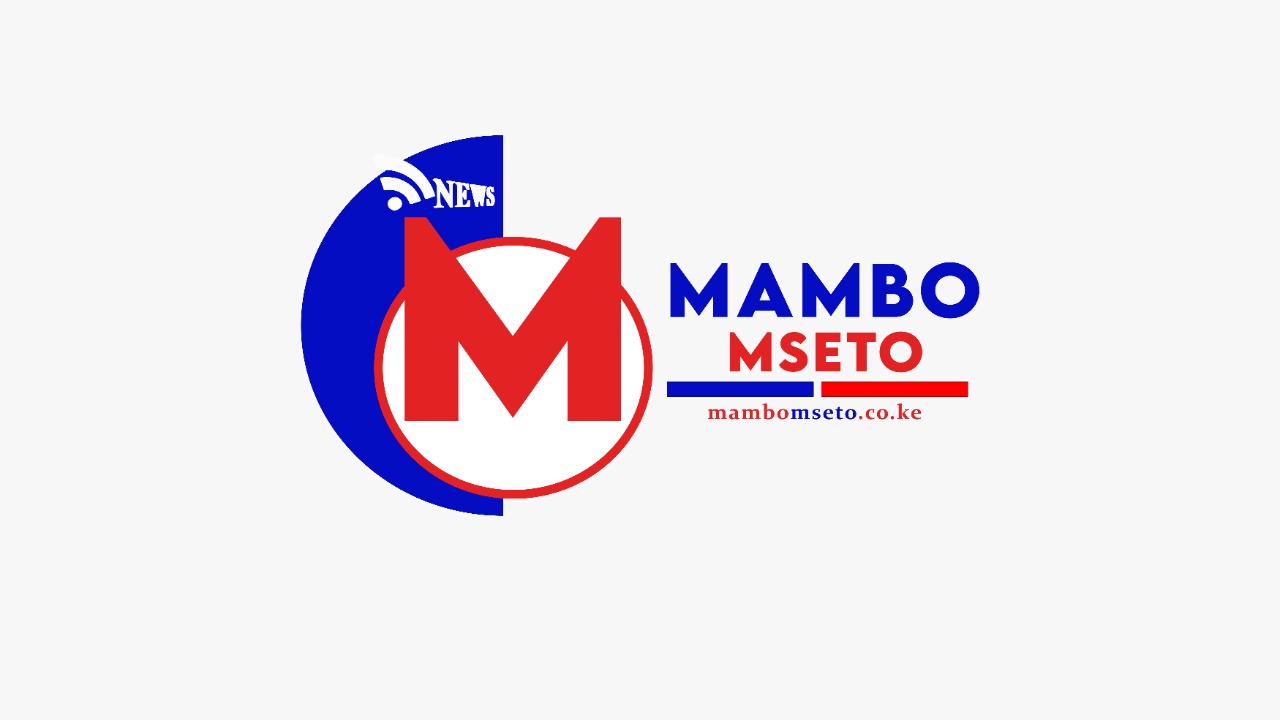An observer group in the concluded August 9 elections has handed in its report, identifying areas of weakness in the technology used by the electoral commission.
The Kenya ICT Action Network (KICTANet)m in its report, has proposed a raft of changes in the Independent Election and Boundaries Commission (IEBC) technological system after identifying several loopholes in the technology used in the concluded election.
In its report released on August 31 2022, the tech-based group noted the issues that were raised over the technology used in the August 9 polls including access to servers by foreigners.

A voter being identified by a KIEMS kit during the August 9 polls.
The observer’s group indicated that the controversy over the involvement of the three Venezuelans affected the perception of the integrity of the process despite statements by IEBC chairperson Wafula Chebukati clarifying their participation.
Notably, the group’s report noted that some of the KIEMS kits malfunctioned on election day as they failed to connect to the network further delaying the electoral process.
Some of the kits reportedly overheated and IEBC took a long time to replace them thus further delaying the voting.
“Some of the polling staff were not all conversant with the use of the KIEMS tablet, especially with regards to the flow of the software user interface, prompts and menus, or how to start or diagnose malfunctions.
“This could partly be due to the fact that the device software is not user-friendly, intuitive, or simple to use,” read the report in part.
In regard to the transmission of results, the tech group noted that there were Form 34Bs that lacked critical information hence the queries over the integrity of the polls.
“KICTANet analysed Form 34B’s uploaded on the online portal prior to the announcement of the results. It found that several forms had errors, such as varying numbers of registered voters (32 forms) and computational errors in total valid votes cast (17 forms).
“Form 34B’s for constituencies such as Fafi, Isiolo South, Igembe North, Tetu, Cherangany, Kipkelion West, Bomet Central, Mumias East, Ikolomani, Luanda, Mt. Elgon, Sirisia, Kanduyi, Muhoroni, Karachuonyo, Suba South, Bonchari, Nyaribari Masaba, and Dagoretti North did not include the total tally,” read the report in part.

Vote recount of 15 polling stations at Forodha House, as directed by the Supreme Court
KICTANet’s report also stated that observers did not have access to the back end of the technology used in the polls recommending more openness in the systems used.
Recommendations by the observer’s group
The observer group recommended a training IEBC officials on time to ensure that they are well conversant with the technology. The Commission’s officials should as well be provided with the manuals of the technology used.
KICTANet also called on IEBC to protect data that its officials have access to, for security purposes.
IEBC was also urged to invest in innovation in election technology and consider progressively digitizing all aspects of the electoral process.
“This can include developing a super KIEMS application to provide a one-stop-shop for services such as voter registration, electronic voting, tallying, and display of results.
“The electoral body should further implement stringent data protection measures with respect to the voter register, and sharing of details of election officials,” KICTANet added.



